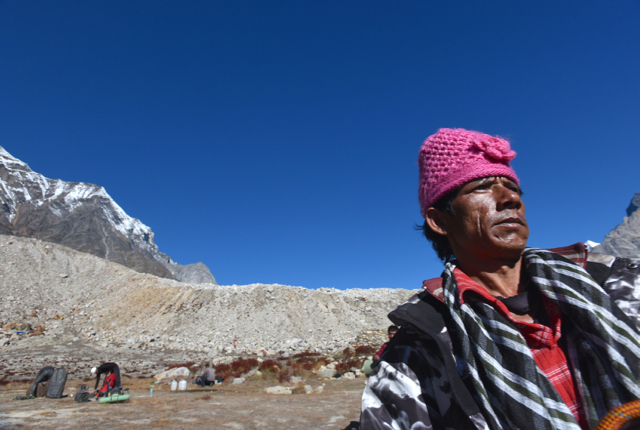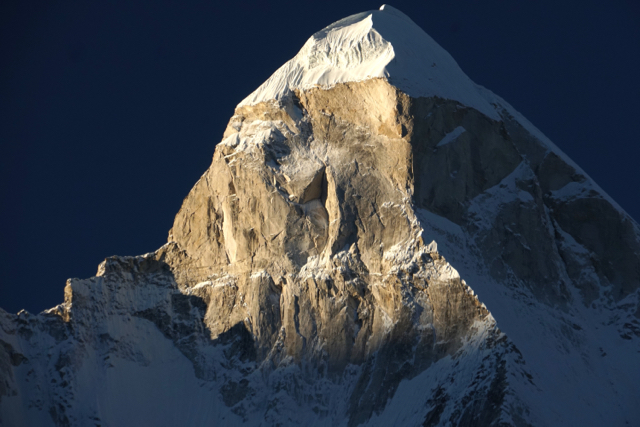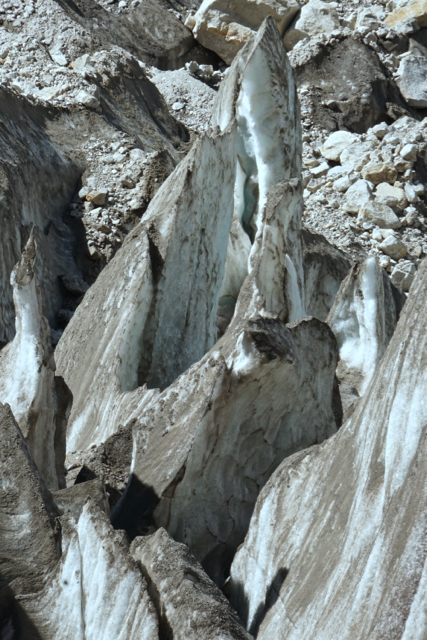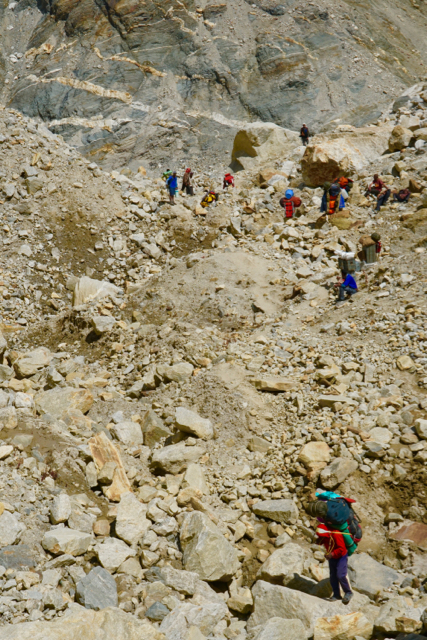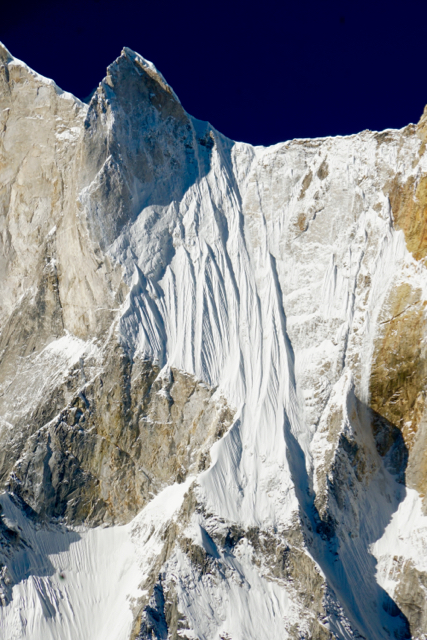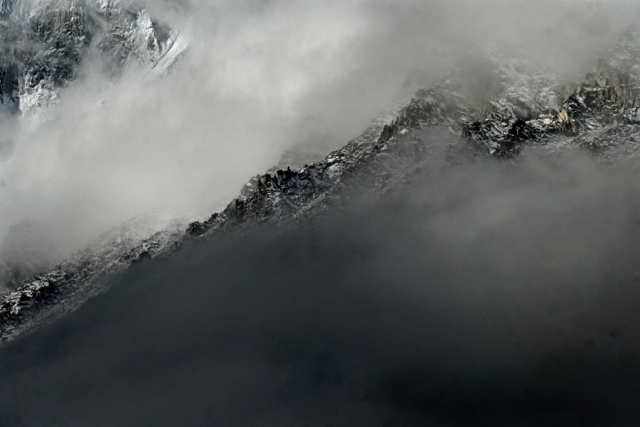Berinder is his name. Tiny, unsmiling, and topped off with a vibrant pink woolen cap I’ve locked onto him and his intense energy. These porters can take the breath with their abilities to pirouette on little more than rubber soles, while hauling crippling loads. There is a not-so-secret adoration I have for them and I’ve long been fascinated with their balance of sinuous power and clairvoyance on ‘all things mountain’. Our porter team was assembled through a lottery system with porters choosing whether they take a single or double load and Berinder quietly but immediately stepped up for the latter. It is the last journey he will shepherd this season. The cold has already whispered its coming in the mornings and shadowed valleys, and our four weeks will take us late into the season .
Little Berinder unhesitatingly took on a full double load, though he himself cannot have been much more than about 55kg’s himself. As we head east into the valley I use his pink woolen hat and, a yellow rucksack that he carries, as a kind of beacon.
Gomukh (cow’s mouth) and its snout of gracefully disintegrating forms appears as a series of vertical shards packed together. Specked with layers of stone it looks like crumbling marble. As we pass sharp cracking jolts can be heard as the sun’s sustained heat causes crevasses to yawn, and solid forms to crunch. We have heard (and Debra has read somewhere) that this great body that feeds so much of the Ganges is retreating by a dozen metres per year. Gangotri is very much alive and struggling, regardless of what anyone might say.
Beyond, our path wanders through a pillared section where ice and stone temporarily etch themselves into a pathway that varies according to the mood (and melt) of ice. Under such intense sun, this ancient pilgrimage route seems to move with the ebb and flow of not anything ancient, but rather with the ever-increasing melt and change of the great bodies of ice. Little figures of pilgrims can be seen traipsing in colours throughout the ice, stone, and etched out valleys.
Swami’s tread barefoot in their light coloured fabrics and beside them, passing them, are our porters who tread in tight unified pods. They are there for eachother, and there for us (at least to the extent where we treat them well). Finicky, utterly tough, and entirely at ease with one another and the terrain, they are as close to physical icons as there are in this big space of heights. They are absolute vitals and if one listens to them and their observations, one can learn much detail about mountains, life and camaraderie in the mountains.
A Polish climbing team has also entered into the space. A quiet group that is fit, they will attempt a summit up the sacred 6500-metre Shivling and another peak further further up Gangotri. That attempt at Shivling will end in tragedy, though no one can guess this as the elegant peak comes into view for our team. The brooding shape of Meru lies at the head of the moraine just to the west of Shivling’s exquisite lines. Up from Tapovan and our camp, the furrowed stretch of moraine of the Meru glacier and the nearly dried up Neer Tal (Neer Lake) lay hidden from us.
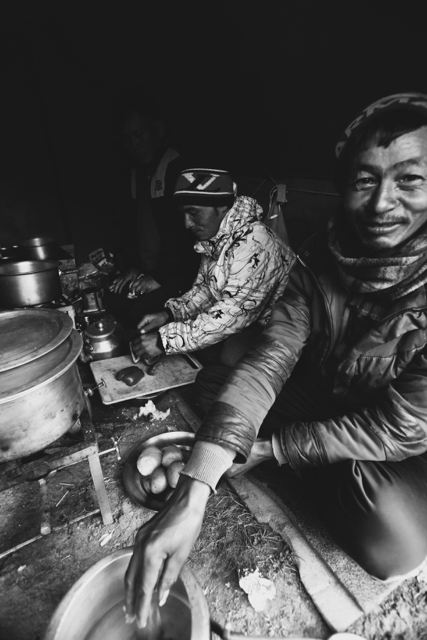
Inevitably it is the kitchen tent that our camp life migrated to. Here ‘Uncle’ (forground), Parkash, and Karma begin the magic meal making
My own thoughts (and at one point words) about the absolute value of the region’s water stores is met with a comment from local guide Sourabh that seemed to neatly sum up so much, “It’s all important”. Here the world of impressions becomes interspersed with the tangible mountain world. Tucked into an enclosure of stone our camp is set buffeted from the winds and gusts. Karma brews up his magic fluids with cloves, nutmeg and ginger and the world of stars and cloud streaks. Peaks under the moonlight are pale smudges and a couple of foxes yip.

